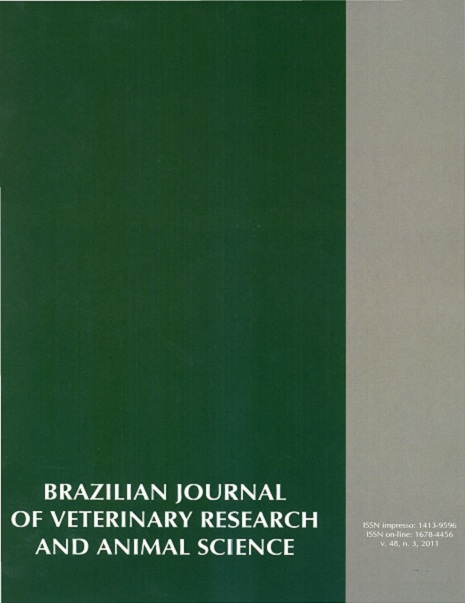The "rural extension" teaching in undergraduate courses of medicine veterinary in Brazil
DOI:
https://doi.org/10.11606/S1413-95962011000300009Keywords:
Rural extension, Technology diffusion, Teaching, CurriculumAbstract
This research investigates how the Undergraduate Courses of Medicine Veterinary currently provide knowledge regarding "Rural Extension". It was applied questionnaires to the 149 courses in activity, out of which 57 answered the survey (38.3%). Despite the curricular changes proposed by the government in 2002, the discipline is still offered in the majority of the schools (97%), showing the recognition of its importance in the undergraduate student education. Three central aspects needs attention: the heterogeneity regarding the hours of the discipline, ranging from 30 to 90 hours per semester; a relative heterogeneity where the discipline is inserted in the curriculum, ranging from the second to the last semester; and the wide range of issues presented in the discipline's programs. It's suggested that the programs should try to include three sets of knowledge that are considered important to professionals of the future, and that appeared with little relevance in current programs: i) an extension with its multiple focus; ii) issues directly related to the veterinary actuation; and iii) emerging issues related to multidisciplinary areas, specially sustainability, the human-animal relation and the animal welfare.Downloads
Download data is not yet available.
Downloads
Published
2011-06-01
Issue
Section
UNDEFINIED
License
The journal content is authorized under the Creative Commons BY-NC-SA license (summary of the license: https://
How to Cite
1.
Alves TC, Gameiro AH. The "rural extension" teaching in undergraduate courses of medicine veterinary in Brazil. Braz. J. Vet. Res. Anim. Sci. [Internet]. 2011 Jun. 1 [cited 2024 Apr. 19];48(3):239-4. Available from: https://revistas.usp.br/bjvras/article/view/34388





